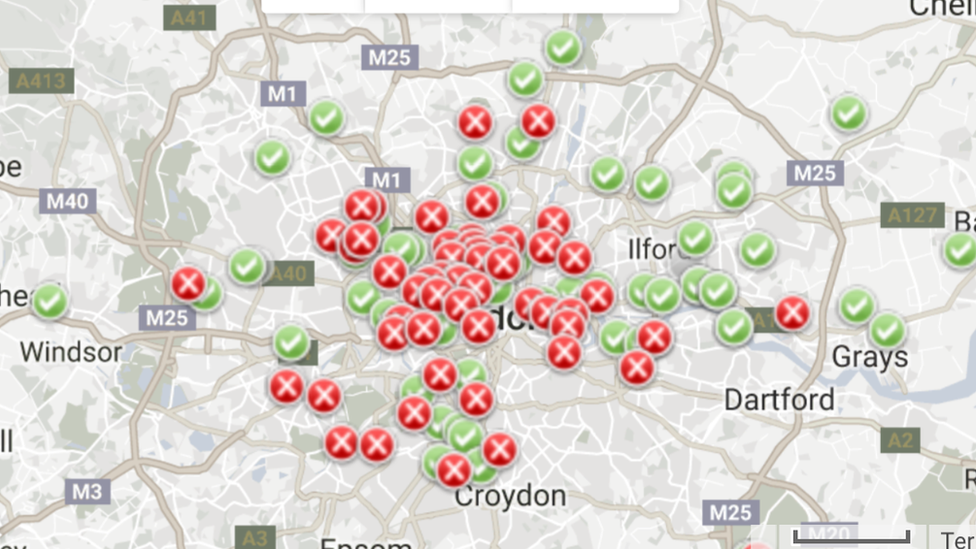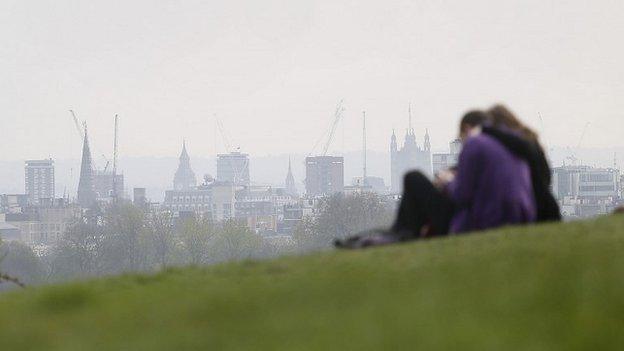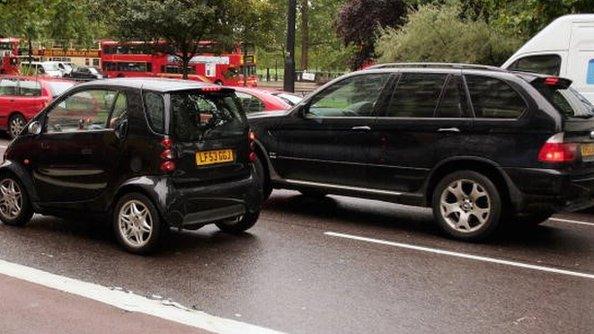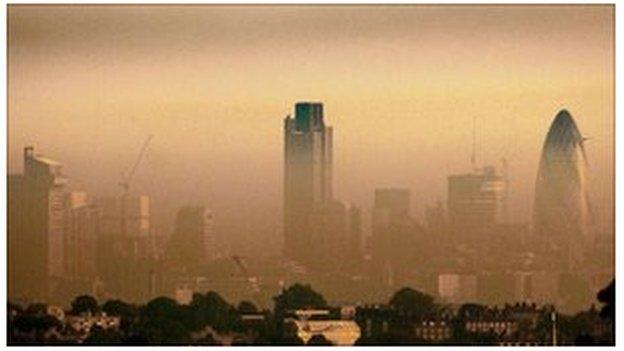Pollution politics: Mayor's plans won't clean up London's air without help
- Published
- comments

Many pollution monitoring stations across London show areas are breaking legal limits for Nitrogen Dioxide
Pollution is a health scandal that is estimated to prematurely kill nearly 10,000 Londoners a year.
Yet because it is mainly invisible and the impacts on the body can take decades to appear, it has largely escaped political action.
While it is now going up the political agenda driven by the mayor of London, on Monday there was more sobering news.
The London sites that monitor the harmful Nitrogen Dioxide (NO2) show many areas still breach pollution limits compared to last year.
Some monitoring stations have improved slightly like the Marylebone Road and Walbrook Wharf in the City, but in total I counted 32 monitoring stations breaching legal NO2 levels including the rather important one next to Heathrow airport in West Drayton.
In some areas, levels of NO2 are actually getting worse.
In Knightsbridge, the readings have increased from 71ug/m3 in 2015 to 74ug/m3 to 2016.
These figures, highlighted by the campaigners Clean for London, show just how hard tackling pollution is.
The figures show many of London's monitoring stations continue to breach limits.
For all the efforts so far by previous administrations - cleaner buses, cycling, green walls, dust suppressants - there is still a long, long way to go.
Campaigners say the only solution is to ban diesel.
Professor Stephen Holgate says we should not be living in tightly sealed homes
What is also interesting is the frank admission from the mayor that he cannot clean up London's air on his own.
The previous administration under Boris Johnson had also said local authorities could only do so much.
Current mayor Sadiq Khan wants a national diesel scrappage scheme and changes to the Vehicle Excise Duty (VED) for diesels so that it is much less attractive to drive a diesel.
He also wants further devolved powers to be able to set the VED himself, so it would mean he could charge the more polluting vehicles more.
National ambitions
Some have interpreted this as political and the mayor showing he is way ahead of the government in dealing with bad air. The Evening Standard says this underlines his national ambitions.
On the other hand, it implies he knows proposals for a toxicity charge on older polluting cars in central London and an ultra-low emission zone (ULEZ) - while radical - will not be enough on their own.
The mayor's plans to improve air quality, external, make this clear: "It is recognised that action through the mayor's measures alone is not sufficient to achieve compliance with legal limits.
"This is partly down to the fact that London's air quality is affected by emissions from elsewhere, but also because the mayor has limited powers to influence significant emissions sources such as airports and industry."
In other words, the mayor's plan will not work on its own and it needs all levels of government to act.
The brutal reality is the mayor's powers are not strong enough to tackle pollution on their own.
- Published2 November 2016

- Published10 October 2016

- Published5 August 2016

- Published15 July 2015
